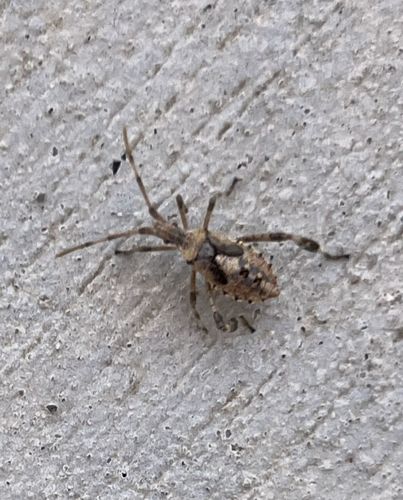Assassin Bug (likely a nymph)
Scientific Name: Varies widely within the family Reduviidae; exact species cannot be determined from this image alone (e.g., Zelus, Sinea, Pselliopus are common genera).
Order & Family: Order: Hemiptera, Family: Reduviidae
Size: Depending on the species and developmental stage, lengths can range from a few millimeters (nymphs) up to 40 mm (adults) for larger species. The individual in the image appears to be a nymph, likely in the range of 5-15 mm.

Natural Habitat
Found in diverse terrestrial habitats including gardens, agricultural fields, forests, grasslands, and even around human dwellings, often lurking on vegetation, under bark, or on walls as seen in the image, blending with their surroundings.
Diet & Feeding
Strictly predatory, feeding on a wide variety of other insects and arthropods. They use their strong, piercing-sucking mouthparts (rostrum) to inject a potent saliva that paralyzes prey and liquefies its internal tissues, which they then suck out.
Behavior Patterns
Ambush predator, often camouflaged among plants or on surfaces awaiting prey. They are generally solitary. Nymphs often mimic debris or plant parts for camouflage and protection. They undergo incomplete metamorphosis, meaning they hatch as nymphs that look like smaller versions of adults, molting several times before reaching maturity.
Risks & Benefits
Benefits: Assassin bugs are highly beneficial insects in gardens and agricultural settings as effective biological control agents, preying on many common pest insects, thus reducing the need for chemical pesticides. Risks: While generally not aggressive towards humans, if handled carelessly or provoked, they can deliver a painful bite with their rostrum. The bite is comparable to a bee sting and can cause momentary sharp pain and localized swelling, but it is not typically dangerous or venomous to humans (unless there's an allergic reaction, which is rare). They are not known to transmit diseases to humans.
Identified on: 9/1/2025